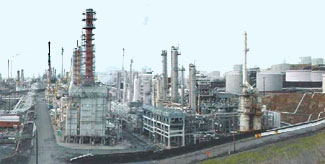Vibrio vulnificus
Articles that lack this notice, including many Eduzendium ones, welcome your collaboration! |
Classification
Higher order taxa
Bacteria; Proteobacteria; Gammaproteobacteria; Vbrionales; Vibrionaceae
Species
Vibrio vulnificus
Description
Vibrio vulnificus is a rod-shaped, gram negative bacterium that ferments lactose. It is a halophile and can be found in warm coastal waters and is very common in the Gulf Coast environments. Vibrio vulnificus grows best in the warm months when the water temperature is between 20 to 24° C and cannot be found in cold water. It is also motile and like two other bacteria found in the Family Vibrionaceae, Vibrio cholerae and Vibrio parahaemolyticus, is a human pathogen. It is known to cause very serious problems and sometimes death in humans if it is ingested or if it contaminates an open wound in the skin. Strains of V. vulnificus can be divided in three biotypes; strains virulent for humans are categorized in biotypes 1 and 3 while strains that are virulent for fish are classified as biotype 2. Gene sequencing has allowed for the identification of the virulence genes in V. vulnificus and the ability to better the examination of an infection. It was first described as a pathogen in 1976 by Hollis et al.
Genome structure
Describe the size and content of the genome. How many chromosomes? Circular or linear? Other interesting features? What is known about its sequence? Does it have any plasmids? Are they important to the organism's lifestyle?
Cell structure and metabolism
Describe any interesting features and/or cell structures; how it gains energy; what important molecules it produces.
Ecology
Describe any interactions with other organisms (included eukaryotes), contributions to the environment, effect on environment, etc.
Pathology
How does this organism cause disease? Human, animal, plant hosts? Virulence factors, as well as patient symptoms.
Application to Biotechnology
Does this organism produce any useful compounds or enzymes? What are they and how are they used?
Current Research
Enter summaries of the most recent research here--at least three required
